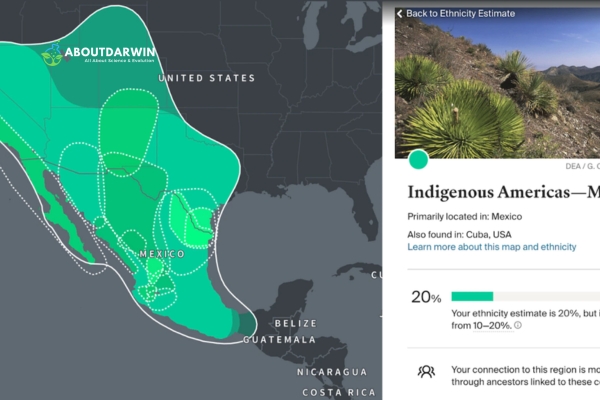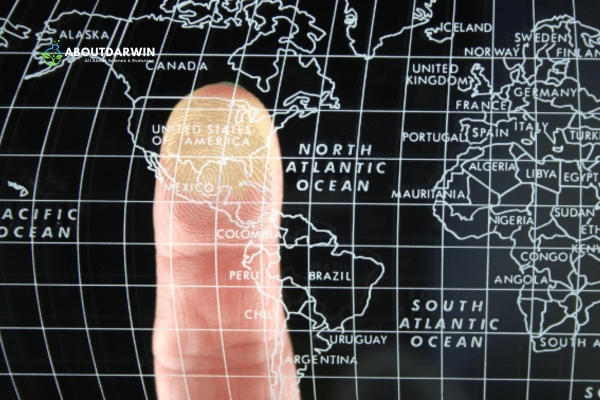Physical Address
304 North Cardinal St.
Dorchester Center, MA 02124
Have you ever wondered about the stories your genes can tell? Exploring DNA mapping and ethnicity estimates not only connects us with our ancestral roots but also unveils fascinating insights into our unique genetic makeup.
This article will guide you through the world of DNA mapping, explain how it works, and what surprises your ethnicity estimates might hold. By the end of it, you’ll understand why delving into your genetic blueprint is like embarking on a personal journey through history.
DNA Mapping and ethnicity estimates offer a window into our past, shedding light on where we come from and highlighting the diverse tapestry of human ancestry that contributes to our identities.
Through analyzing tiny pieces of DNA, scientists can map out a person’s lineage across continents and periods. This doesn’t just put names to faces in your family tree but reveals a detailed ethnic background narrative that many find surprising, enriching, and sometimes even life-changing.
Contents
When we hear about DNA mapping, it might feel like stepping into a science fiction story. But in reality, it’s a groundbreaking process that plays a huge role in understanding who we are and where we come from. To break it down to its most basic elements, DNA mapping is like drawing a detailed map of the human body’s genetic material.

Imagine you’re putting together a huge puzzle. Each piece represents different parts of your DNA, which carries the instructions for making you who you are. DNA mapping is the process of finding out where each of these pieces goes on the genetic map of the human body.
Scientists use special tools and machines to look closely at our DNA. They can see the order – or sequence – of the chemicals that make up our DNA. These chemicals are represented by letters: A, T, C, and G. The order of these letters provides a code that guides everything from how tall we grow to what color our eyes are.
But why should we care about having this kind of map? Well, it’s incredibly useful for many reasons! It helps doctors understand diseases better, allowing them to come up with more effective treatments. It also lets scientists study how humans have moved and changed over thousands of years.
DNA mapping gives us unimagined insight into ourselves and our pasts. Imagine understanding not just who you are but being able to trace where you’ve originated from on such a deep level! That’s the reality made possible by advances in this fascinating area of study.
Also Read: Isostatic Rebound: Uncovering Post-glacial Rebound Process
When we talk about finding out where our ancestors come from, many of us turn to DNA mapping and ethnicity estimates. This fascinating process gives us a peek into our past, telling us about the people and places that form part of our history. But how exactly does this work? Let’s dive into the basics.

The journey starts when you provide a small sample of your DNA, usually through saliva or a cheek swab. Scientists then analyze this sample by looking at specific parts of your DNA that are known to vary from one population to another. These variations have developed over thousands of years as human populations lived in different parts of the world.
By comparing your DNA with the DNA patterns found in people from all over the globe, scientists can estimate your ethnic makeup. This means they can tell you what percentage of your ancestry comes from various regions around the world. For example, you might find out you’re 40% East Asian, 35% European, 20% African, and 5% Indigenous American.
It’s important to understand these estimates are just that—estimates. They give you an idea about your ethnic background but may not always be 100% accurate. The reason is that humans have always moved around a lot, mixed with different groups, and shared their genetic material along the way.
Despite these complexities, ethnicity estimates through DNA can provide valuable insights into who we are and where we come from. They allow us to connect with our roots in ways we might never have imagined before.
So next time when someone mentions DNA mapping, remember it’s more than just science; it’s a bridge connecting us to our ancestors and their stories across time and space.
Despite their popularity and the fascinating insights they provide, these tests come with limitations that users should be aware of.
The constraints are primarily due to the complexities of genetic inheritance, the evolving nature of databases, and varying methodologies among testing companies.
In considering these limitations alongside the undeniably rich insights provided by DNA mapping and ethnicity estimates, individuals can better set their expectations regarding what these tools can realistically offer in terms of understanding ancestry and heritage.
Also Read: Mueller Hinton Agar (MHA) Composition, Principle and Uses
In recent years, the world of DNA mapping technology has seen some amazing advancements. One major development is the speed at which we can now map a person’s DNA. Not too long ago, it would take a long time and a lot of money to map someone’s DNA fully.
But today, thanks to new technology, this process is much faster and more affordable than ever before. This means that more people can access DNA mapping services, helping them learn about their heritage and health.
Another big step forward is how much more detailed the information we get from DNA mapping has become. In the past, we could learn only very basic things from our DNA results. But now, scientists have tools that can tell us extremely detailed information about our ancestry and health risks by looking closely at our genes.
This isn’t just about finding out which parts of the world your ancestors came from; it’s also about understanding what specific traits or conditions might have been passed down to you. Such precision was unimaginable just a few years ago but has now become an exciting part of modern DNA mapping and ethnicity estimates.
While the scientific advancements in this field are remarkable, they also introduce a plethora of ethical considerations. These concerns encompass privacy issues, the potential for discrimination based on genetic information, and the psychological impact of test results.

Addressing these ethical considerations is imperative to ensure that DNA testing benefits individuals and society at large without compromising personal rights or well-being.
By rigorously addressing these ethical considerations, we can navigate the complex landscape of DNA testing with a focus on respecting individual rights and promoting transparency and accountability within this advancing field.
Also Read: Understanding Blood Agar: Composition, Uses, & Preparation
Yes, having insurance for a drone business is important to protect against potential damage or liability claims.
You might not need drone coverage if you’re flying as a hobbyist and only in areas where there’s low risk. Check local laws to be sure.
Personal drone insurance covers the risks associated with flying drones for fun, like accidental injuries or property damage.
Commercial drone insurance provides coverage for businesses that use drones, safeguarding against liabilities and damages arising from their operation.
Also Read: Understanding Blood Agar: Composition, Uses, & Preparation
So there you have it, everything you need to know about DNA mapping and ethnicity estimates. These tests provide a fascinating glimpse into your ancestry and the complex tapestry of genes that make up who you are. However, it’s crucial to approach these results with an open mind.
The science behind DNA mapping is always improving, which means our understanding of ethnicity and genetics is too. Remember, your DNA tells a story, but it’s just one part of your family’s history. Whether the test confirms what you’ve always known or surprises you with new info, embrace this knowledge as just a piece of your unique personal puzzle.